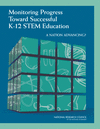"Vocational-technical high schools across Massachusetts have dramatically cut dropout rates, but school district-run voc-techs should be granted greater autonomy if they are to replicate the outstanding academic and student retention performance of their more independent regional counterparts, according to a new study published by Pioneer Institute.
"The needs and responsibilities of vocational-technical students are unique," said David Ferreira, executive director of the Massachusetts Association of Vocational Administrators. "It only makes sense for schools to have the freedom to set policies and procedures customized to those students."
An average of about 10,000 Massachusetts students dropped out annually over the past decade. In 2011, the dropout rate at the commonwealth's comprehensive high schools was 2.8 percent.
But the average was 1.6 percent at voc-tech schools and just 0.9 percent at regional voc-techs. The voc-tech dropout rate has been at least 1 percentage point beneath that for comprehensive high schools for more than 15 years. More than 60 percent of voc-tech students go on to post-secondary education.
The lower dropout rates come despite voc-techs educating a higher percentage of at-risk students. Statewide, 17 percent of students are in special education, while the number is 24 percent at the voc-techs. The voc-tech special education graduation rate of 82 percent is nearly 20 percentage points higher than that of comprehensive high schools.
One reason Fraser identifies for voc-techs' success is a schedule of alternating weeks of academic and trade education, which makes it easier for students to envision themselves in a career.
After a semester of exploring up to 10 career and technical majors, the alternating academic/technical schedule allows teachers to work with 10-15 students all day for a week at a time, which fosters more nurturing mentor relationships. In addition to being licensed by the state Department of Elementary and Secondary Education (DESE), voc-tech teachers must also have at least three-to-five years of training in the field of their licensure.
Since voc-tech students hone their skills through repetition that can only be practiced at school, it's no surprise that the schools have found a high correlation between high attendance and low dropout rates. At Shawsheen Valley Technical High School, a corrective action plan is developed for any student whose attendance rate dips below 90 percent.
Some Massachusetts vocational-technical high school buildings are over 50 years old. The authors call on the Legislature to approve a five year, $5 million bond authorization filed by the Patrick administration to help the schools upgrade laboratories and equipment.
The report also recommends that, "The administration and Department of Elementary & Secondary Education should work with practitioners to support a customized public relations campaign to bring attention to the successes of vocational technical schools in the Commonwealth."
Alison L. Fraser is an education policy, research and strategy consultant, and president of Practical Policy; she is also a part-time administrator at Blackstone Valley Regional Vocational Technical School. William Donovan is a former staff writer with the Providence Journal, and has taught business journalism in the graduate programs at Boston University and Northeastern University.
Browse Pioneer's related research and analysis on vocational education: Vocational-Technical Education in Massachusetts (October 2008) also authored by Alison L. Fraser; a series of Boston.com blog posts by Jim Stergios featuring video interviews of vocational-technical school leaders here, here, here, here, and here; and a Fall River Herald News op-ed in support of expanding vocational education here."
(This is not a NU publication)

.png)


 "Following a 2011 report by the National Research Council (NRC) on successful K-12 education in science, technology, engineering, and mathematics (STEM), Congress asked the National Science Foundation to identify methods for tracking progress toward the report's recommendations. In response, the NRC convened the Committee on an Evaluation Framework for Successful K-12 STEM Education to take on this assignment. The committee developed 14 indicators linked to the 2011 report's recommendations. By providing a focused set of key indicators related to students' access to quality learning, educator's capacity, and policy and funding initiatives in STEM, the committee addresses the need for research and data that can be used to monitor progress in K-12 STEM education and make informed decisions about improving it.
"Following a 2011 report by the National Research Council (NRC) on successful K-12 education in science, technology, engineering, and mathematics (STEM), Congress asked the National Science Foundation to identify methods for tracking progress toward the report's recommendations. In response, the NRC convened the Committee on an Evaluation Framework for Successful K-12 STEM Education to take on this assignment. The committee developed 14 indicators linked to the 2011 report's recommendations. By providing a focused set of key indicators related to students' access to quality learning, educator's capacity, and policy and funding initiatives in STEM, the committee addresses the need for research and data that can be used to monitor progress in K-12 STEM education and make informed decisions about improving it.